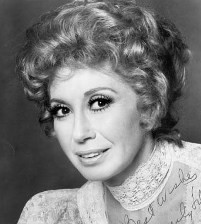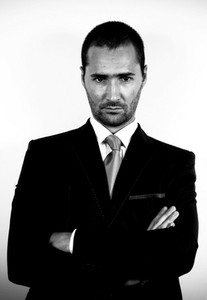
Beverly Sills |
Beverly Sills

Seals is one of the greatest singers of the XNUMXth century, “the first lady of American opera”. A columnist for The New Yorker magazine wrote with extraordinary enthusiasm: “If I recommended the sights of New York to tourists, I would put Beverly Seals in the party of Manon in the very first place, well above the Statue of Liberty and the Empire State Building.” Seals’ voice was distinguished by extraordinary lightness, and at the same time charm, stage talent and charming appearance that captivated the audience.
Describing her appearance, the critic found the following words: “She has brown eyes, a Slavic oval face, an upturned nose, full lips, beautiful skin color and a charming smile. But the main thing in her appearance is a thin waist, which is a great advantage for an opera actress. All this, along with fiery red hair, makes Seals charming. In short, she is a beauty by operatic standards.”
There is nothing surprising in the “Slavic oval”: the mother of the future singer is Russian.
Beverly Seals (real name Bella Silverman) was born May 25, 1929 in New York, in a family of emigrants. The father came to the US from Romania, and the mother came from Russia. Under the influence of the mother, Beverly’s musical tastes were formed. “My mother,” recalls Seals, “had a collection of records of Amelita Galli-Curci, the famous soprano of the 1920s. Twenty-two arias. Every morning my mother would start the gramophone, put on a record, and then go to prepare breakfast. And by the age of seven, I knew all 22 arias by heart, I grew up on these arias in the same way that children now grow up on television commercials.
Not limited to home music making, Bella regularly participated in children’s radio programs.
In 1936, the mother brought the girl to the studio of Estelle Liebling, the accompanist of Galli-Curci. Since then, for thirty-five years, Liebling and Seals have not parted.
At first, Liebling, a solid teacher, did not particularly want to train coloratura soprano at such an early age. However, when she heard how the girl sang … an advertisement about soap powder, she agreed to start classes. Things moved at a dizzying pace. By the age of thirteen, the student had prepared 50 opera parts! “Estell Liebling just stuffed me with them,” the artist recalls. One can only wonder how she retained her voice. She was generally ready to sing anywhere and as much as she wanted. Beverly performed in the Talent Search radio program, in the ladies’ club in the fashionable Waldorf Astoria hotel, in a nightclub in New York, in musicals and operettas of various troupes.
After leaving school, Seals was offered an engagement in a traveling theater. At first she sang in operettas, and in 1947 she made her debut in Philadelphia in opera with the part of Frasquita in Bizet’s Carmen.
Together with traveling troupes, she moved from city to city, performing one part after another, managing to replenish her repertoire by some miracle. Later she will say: “I would like to sing all the parts written for soprano.” Her norm is about 60 performances a year – just fantastic!
After ten years of touring various US cities, in 1955 the singer decided to try her hand at the New York City Opera. But here, too, she did not immediately occupy a leading position. For a long time she was known only from the opera “The Ballad of Baby Doe” by the American composer Douglas More.
Finally, in 1963, she was entrusted with the role of Donna Anna in Mozart’s Don Giovanni – and they were not mistaken. But the final victory had to wait another three years, before the role of Cleopatra in Handel’s Julius Caesar. Then it became clear to everyone what a large-scale talent came to the musical theater stage. “Beverly Seals,” the critic writes, “performed the complex graces of Handel with such technicality, with such impeccable skill, with such warmth, which are rarely found in singers of her type. In addition, her singing was so flexible and expressive that the audience instantly caught any change in the mood of the heroine. The performance was a resounding success… The main merit belonged to Sils: bursting into a nightingale, she seduced the Roman dictator and kept the entire auditorium in suspense.”
In the same year, she had a huge success in the opera Manon by J. Massenet. The public and critics were delighted, calling her the best Manon since Geraldine Farrar.
In 1969, Seals debuted overseas. The famous Milanese theater “La Scala” has resumed the production of Rossini’s opera “The Siege of Corinth” especially for the American singer. In this performance, Beverly sang the part of Pamir. Further, Sils performed on the stages of theaters in Naples, London, West Berlin, Buenos Aires.
Triumphs in the best theaters of the world did not stop the singer’s painstaking work, the goal of which is “all soprano parts”. There are really an extremely large number of them – over eighty. Seals, in particular, successfully sang Lucia in Donizetti’s Lucia di Lammermoor, Elvira in Bellini’s The Puritani, Rosina in Rossini’s The Barber of Seville, the Queen of Shemakhan in Rimsky-Korsakov’s The Golden Cockerel, Violetta in Verdi’s La Traviata. , Daphne in the opera by R. Strauss.
An artist with amazing intuition, at the same time a thoughtful analyst. “At first, I study the libretto, work on it from all sides,” says the singer. – If, for example, I come across an Italian word with a slightly different meaning than in the dictionary, I begin to dig into its true meaning, and in the libretto you often come across such things … I don’t just want to flaunt my vocal technique. First of all, I am interested in the image itself … I resort to jewelry only after I get a complete picture of the role. I never use ornaments that don’t match the character. All my decorations in Lucia, for example, contribute to the dramatization of the image.
And with all that, Seals considers herself an emotional, not an intellectual singer: “I tried to be guided by the desire of the public. I tried my best to please her. Each performance was for me some kind of critical analysis. If I found myself in art, it is only because I learned to control my feelings.
In 1979, her anniversary year, Seals made the decision to leave the opera stage. The very next year, she headed the New York City Opera.





